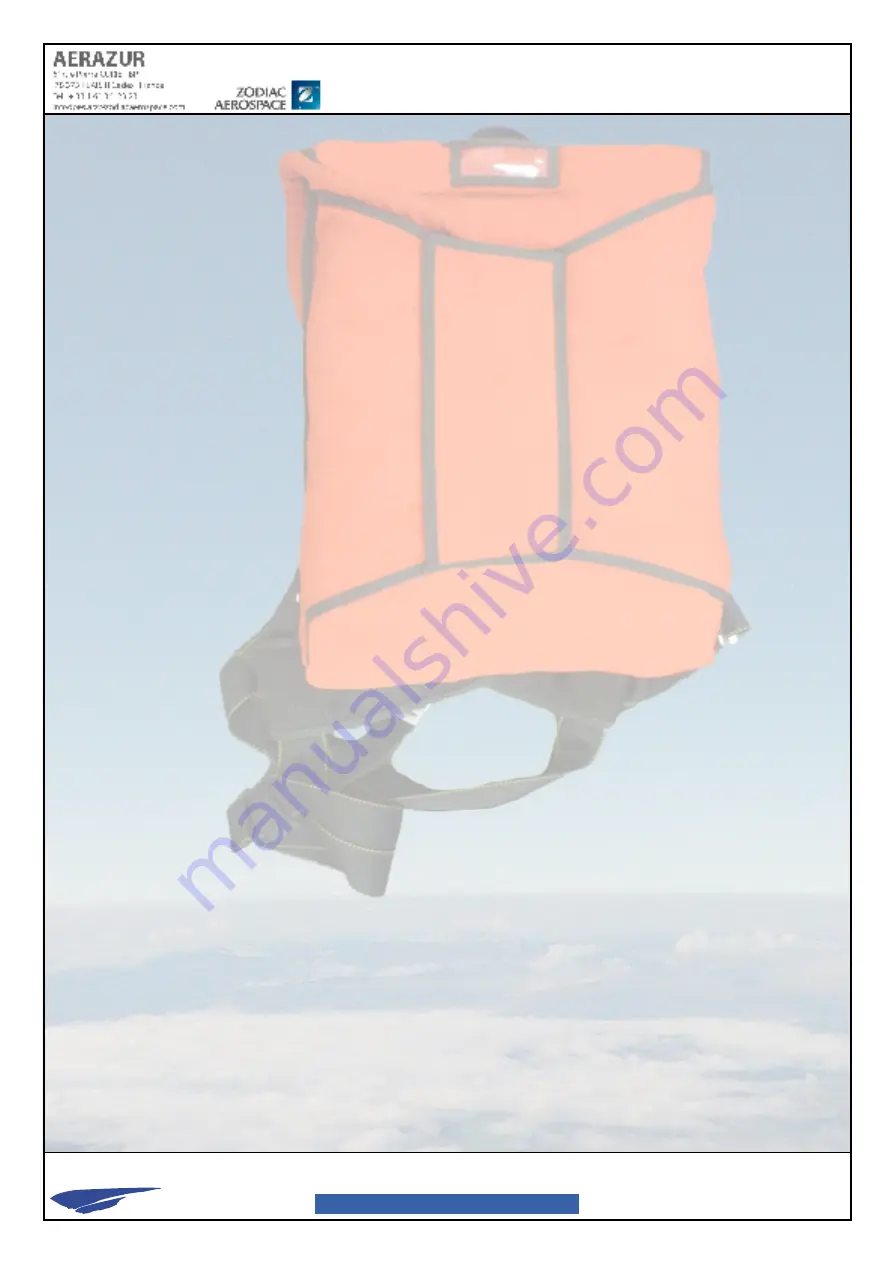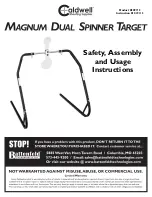
Lire, suivre, appliquer les AVERTISSEMENTS, RECOMMANDATIONS ET INSTRUCTIONS de ce manuel \
Read and follow all WARNINGS, WARRANTY, INSTRUCTIONS for products of this manual.
Parachutes de France\ Aérazur
10\31
Manuel d’utilisation et de maintenance\ Use and maitain manual
25-63-78 FLEXPACK 2
Ed 10 - Septembre 2012
2-2-2 Atterrissage /
Earth landing
Maintenir la voilure face au vent (ce qui a pour effet de diminuer la vitesse sol) et
prendre une position «tonique» pieds joints, genoux déverrouillés, tête baissée
(menton contre la poitrine), coudes serrésau corps (sans lâcher les poignées).
Conserver cette position jusqu’à l’atterrissage.
Se relever et dégrafer le harnais.
Pour dégonfler la voilure la contourner pour se placer sous le vent de celle-ci.
Dans une contrée désertique ou montagneuse, étaler la voilure sur le sol au maximum
pour être répéré plus facilement.
Keep facing the wind during landing to reduce ground speed.
Put some tension on the muscles in your body, but keep some flex in your knees.
Drop the head, leeting your chin rest on your chest.
While holding on to the toggles fold in your elbows alongside your body.
Stay in this position until ground contact.
Stand-up and unbuckle your harness.
To collapse the canopy run around the canopy, so that the wind will push on the outside.
If you are in a deserted area spread out the canopy so that rescue personnel
can easily spot you.
2-2-3 Amerrissage /
Water landing
Si l’on est équipé d’un gilet de sauvetage,
ne pas gonfler le gilet pendant la descente
ceci pourrait provoquer des blessures graves.
Après avoir touché l’eau, dégrafer le harnais puis gonfler le gilet.
Si l’on dispose d’un équipement de survie, gonfler le canot pneumatique durant la descente.
Dès l’amerrissage, dégrafer le harnais en libérant les mousquetons de cuissardes et
de poitrine, puis se hisser à bord du canot.
Rallier la rive la plus proche, ou se conformer aux instructions du manuel de survie.
En fonction du type d’appareil utilisé, il est conseillé d’effectuer un entrainement
par des répétitions au sol .
Sur certains types d’appareils, une procédure spécifique d’évacuation peut figurer au
manuel de vol, dans ce cas, effectuer un entrainement en intégrant cette procédure.
If you wear a lifejacket grab the activation handle and
Never activate the lifejacket during
the descent under the parachute serious injury can result.
After you touched the water unbuckle the harness. then activate lifejacket
If you have a dinghy, inflate it during the descent under the parachute.
As soon as you touch water unbuckle the harness by opening the snaps of the legstraps
and the cheststrap.
Then clim into the dinghy. Paddle to the closest coast or follow the instructions supplied
with the dinghy.
Depending on the type of aircraft, it is strongly recommended that you practice your
bail-out procedures regularly on the ground.
Certain aircraft may have a manual with a specific evacuation procedure.
In that case incorporate that procedure in the instructions given here-above.











































